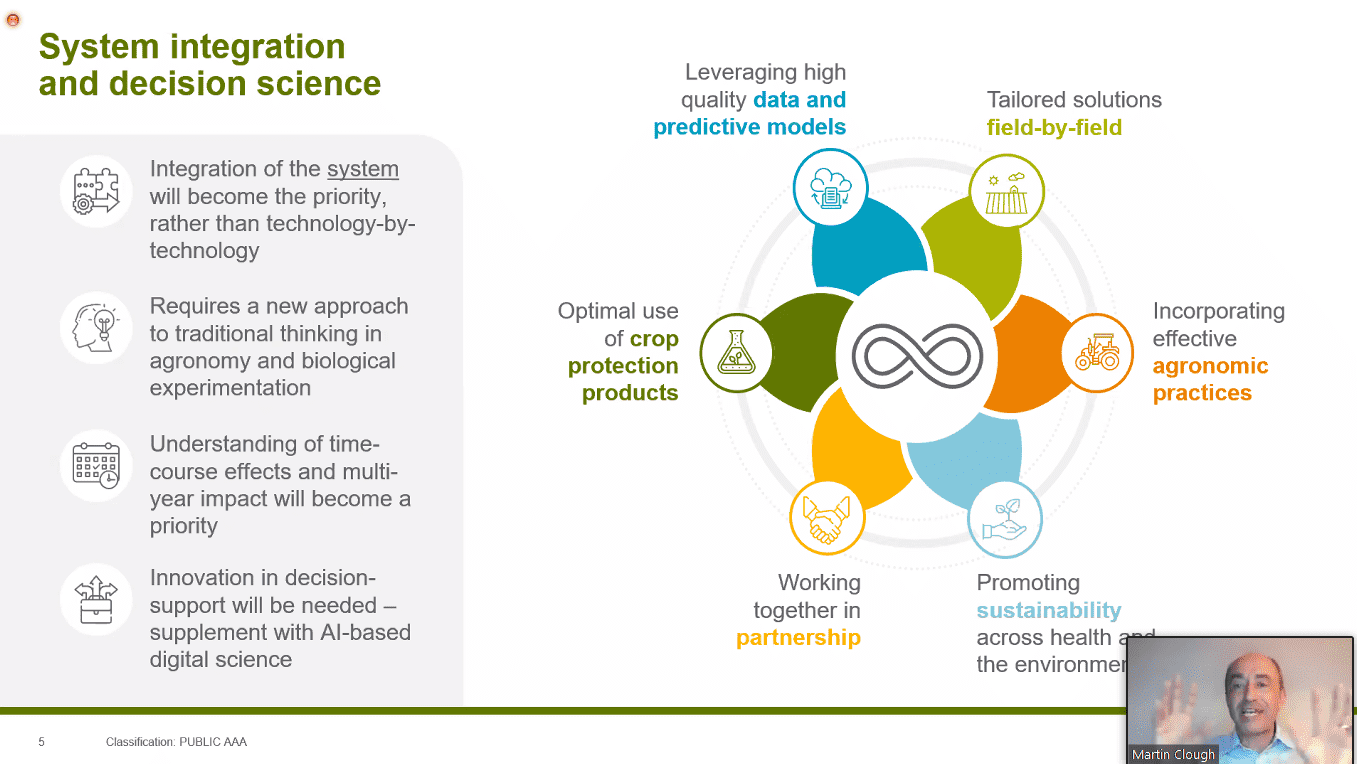Dr Richard Harrison, Director of Cambridge Crop Research, at CHAP partner NIAB opened the event by highlighting the need for new crop protection tools and crop systems to meet society’s future needs. He said that as a sector, agriculture had been slow in adopting innovation, but that joint effort by both industry and government could bring about real timely change, as seen recently in other areas when tackling the COVID-19 pandemic.
He cited the role of the recently launched Agricultural Bill in replacing the Basic Payment Scheme (BPS) with the Environmental Land Management scheme (ELMS), and the sector’s aim to improve soil and the wider environment; as well as the impact of increasing threats from pest/disease and a highly regulated food system on this vision. He also examined agriculture’s role in reducing the effects of climate change, and the need to halve greenhouse gas emissions from their 2012 level in the next 10 years.
Alongside this UK view, he also stressed how global agriculture and food production needed to be transformed, but that innovation could take up to 30 years to be realised and adopted.
Next Dr Martin Clough, Head of Technology and Digital Integration at Syngenta, explored the huge opportunity for technological collaboration in research and digital innovation in agriculture. Advances in the development of many ‘omics’ platforms has led to an increased understanding of plant genetics and biology along with the wider environment, such as soil microbiomes.
This understanding also presents an opportunity for new innovation in plant health products, such as using plant hormones such as Abscisic acid, Strigolactones and Cytokinins to tackle drought, cold and heat stress. Together with others these abiotic stresses are estimated to cause upto $200bn (£150bn) in crop losses.
He showed how this was an exciting and dynamic area, but also a challenging one for researchers. Despite this the wider industry continues to look for new innovation backed by good science, to provide the new solutions for growers globally.
Cathryn Lambourne, from CHAP partner AHDB, examined the future perspectives on how we are tackling the grand challenges in plant health to transform agriculture sustainability. Presently, the sector faces a reduction in the available plant protection products (PPPs), which can lead to over-use and increased resistance. This is to some extent counteracted by the increasing number of biologicals coming onto the market, but growers must also be aware of their limitations and how best to use these. In the future, she hoped, there would be new opportunities for the sector from changes in legislation and new technology, but there will also be winners and losers.
Changes in legislation could offer new regulatory frameworks for PPPs, along with potential changes in IPM adoption and environmental work. Similarly, regulation of imports and UK biosecurity can help prevent the introduction of new threats, such as the disease Xylella. Emerging technology and data-driven decision tools will allow UK growers to better understand complex biological systems, while disruptive technology such as; RNAi, Gene editing and in silica risk modelling could offer the potential for more efficient and precise crop protection. However, these must also be rolled out alongside improved training and upskilling of the sector, along with improved confidence and myth busting of new methods and technology.
Finally Dr Uta Paszkowski, Cambridge University, explored our ability to learn from nature and examine the transformative potential of beneficial plant associated microbes. Many wild plants form close associations with microbes to better access nutrients and protection against pathogens, but through domestication and the intensification of agriculture, many of these abilities have been lost.
She showed how nitrogen-fixing rhizobacteria can fix between 200-500 kg of N2 Ha-1 for symbiotic leguminous crops, reducing fertiliser requirements, and posed the question of transferring this ability into non-legume crops. Next she showed how Arbuscular mycorrhizal fungi are able to promote the yield of maize through improved phosphate availability, but how using synthetic fertilisers suppressed these species and their action.
However, it’s not all about one beneficial species, but also looking at how plant microbiomes help to feed and protect plants. Recent work exploring bacterial wilt disease in tomato, found that the presence of Flavobacteriaceae provided protection to the plant. She posed that these issues were challenging, but that it also required greater collaboration between industry and academia to inform discovery and translation of these solutions into products.
If you have any questions about working with CHAP, please send us an email using the enquiries form at the bottom of our homepage.












